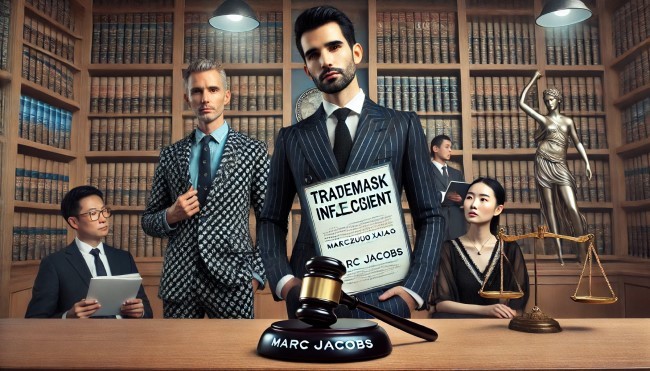Marc Jacobs Lawsuit: Defending Creativity and Integrity in Fashion
How Legal Battles Shape the Fashion Industry

Fashion is an ever-evolving industry where creativity meets commerce, often leading to disputes over intellectual property. The Marc Jacobs lawsuit is a prominent example of such a conflict, highlighting designers’ challenges in protecting their creations. This article delves into the details of the Marc Jacobs lawsuit, its implications for the fashion industry, and the broader context of trademark enforcement.
The Marc Jacobs Lawsuit: An Overview
The Marc Jacobs lawsuit primarily revolves around trademark infringement claims. Marc Jacobs, a renowned designer under the LVMH umbrella, has taken legal action against various entities to protect his brand’s intellectual property. The critical elements of this lawsuit include:
- Trademark Infringement Claims: Marc Jacobs alleges that Guangzhou Xiao Ling Wan Trading Co., a Chinese seller, infringed on his trademark by selling knockoff versions of “THE TOTE BAG” on Amazon.
- Fraudulent Assertions of Trademark Infringement: Guangzhou Xiao countersued, claiming that Marc Jacobs made false trademark infringement assertions to Amazon, resulting in the removal of their products and significant business losses.
- Ongoing Legal Disputes: Besides the lawsuit with Guangzhou Xiao, Marc Jacobs is also involved in a separate legal battle with Roma Costume over using the “Roma” mark in collaboration with Fendi.
The Core of the Dispute: THE TOTE BAG
The Popularity of THE TOTE BAG
Marc Jacobs’ “THE TOTE BAG“ has become a coveted item, symbolizing fashion and functionality. Its success, however, has also made it a target for counterfeiters looking to capitalize on its popularity.
The Allegations
Marc Jacobs claims that Guangzhou Xiao’s products are almost exact replicas of his designs, leading to consumer confusion and potentially damaging his brand’s reputation. The lawsuit highlights designers’ difficulties in protecting intellectual property in a globalized market where counterfeits can quickly be produced and distributed.
The Legal Battle: Claims and Counterclaims
Marc Jacobs’ Position
Marc Jacobs argues that his actions to enforce trademark rights are legitimate efforts to protect his brand. He maintains that Guangzhou Xiao’s products infringe on his trademarks and that reporting these infringements to Amazon is a standard procedure for protecting intellectual property.
Guangzhou Xiao’s Counterclaims
Guangzhou Xiao contends that Marc Jacobs’ trademark infringement claims are unfounded and constitute fraudulent assertions. They argue that their products are branded under “Fancy Forest“ and do not mislead consumers. Guangzhou Xiao seeks a court declaration of non-infringement, monetary damages, and an injunction to prevent Marc Jacobs from making future complaints.
The Broader Context: Trademark Enforcement in Fashion
Challenges in Trademark Protection
Trademark protection in fashion is complex, given the industry’s fast-paced nature and the ease with which designs can be copied. The Marc Jacobs lawsuit underscores the importance of robust trademark enforcement mechanisms to safeguard creative works.
The Role of Online Marketplaces
Online marketplaces like Amazon play a crucial role in these disputes. As seen in Guangzhou Xiao’s case, their takedown processes can significantly impact sellers. The lawsuit may prompt discussions on improving these processes to balance the rights of trademark owners and sellers.
Legal Strategies and Implications
Marc Jacobs’ Legal Strategy
Marc Jacobs’ legal strategy focuses on protecting his brand’s distinctiveness and preventing consumer confusion. By pursuing legal action, he aims to deter counterfeiters and maintain the integrity of his brand.
Potential Outcomes
The outcomes of these lawsuits could have far-reaching implications. A ruling favoring Marc Jacobs could strengthen trademark protections for designers, while a verdict for Guangzhou Xiao might lead to reforms in how online marketplaces handle trademark disputes.
Conclusion: The Impact of the Marc Jacobs Lawsuit
The Marc Jacobs lawsuit is more than a legal dispute; it is a testament to the ongoing battle between creativity and imitation in the fashion industry. As designers continue to push the boundaries of innovation, protecting their intellectual property remains paramount. The resolution of this lawsuit will likely shape future trademark enforcement practices and influence how fashion brands navigate the challenges of a global marketplace.
FAQs
What is the Marc Jacobs lawsuit about?
The lawsuit involves Marc Jacobs’ efforts to protect his trademark “THE TOTE BAG“ against alleged counterfeit products sold by Guangzhou Xiao on Amazon.
What are the essential claims in the Marc Jacobs lawsuit?
Marc Jacobs claims trademark infringement, while Guangzhou Xiao countersues for fraudulent assertions of trademark infringement and seeks a declaration of non-infringement.
How does the Marc Jacobs lawsuit affect the fashion industry?
The lawsuit highlights the challenges of trademark enforcement in fashion and could lead to changes in how online marketplaces handle trademark disputes.
What are the potential outcomes of the Marc Jacobs lawsuit?
The outcomes could strengthen designer trademark protections or prompt reforms in online marketplace takedown processes.
Why is trademark protection important in fashion?
Trademark protection helps maintain the integrity of brands, prevents consumer confusion, and deters counterfeiters from copying original designs.



